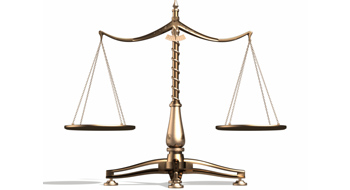

Since the #MeToo movement has brought a deluge of attention to cases featuring all manner of harassment and assault, are the actions of employers, employees and employment legal professionals changing at all?
Not for Elizabeth Bingham, a workplace investigator and trainer at Rubin Tomlinson LLP, a firm that exclusively deals with conducting external, third-party investigations of workplace complaints. At a panel hosted by the University of Toronto this week, she said the volume of work is certainly rising, but the procedures when conducting an investigation haven’t changed.
While public discourse pushes the mantra “believe all women,” that simply can’t be the reality in a legal context, said Bingham. “That’s not the perspective we take as professional neutrals when we come into an organization.”
Read: Corporate Canada’s quiet #MeToo reckoning
In addition to upping the likelihood that an outside firm will become involved when someone makes allegations of harassment or assault, the #MeToo movement is changing the overall environment in which an employee is coming forward with a claim, said Dianne Pohler, an assistant professor at the University of Toronto’s Centre for Industrial Relations and Human Resources.
“It will have a political element, a [public relations] element, when it comes to how HR and the firm and the senior executives are dealing with it,” said Pohler. “That may make it worse for everybody, in terms of trying to build the kind of culture the organization wants to build. Again, it depends on what you care about and what kind of outcomes you want to see.” It’s important to remember that a failure has already taken place if lawyers are getting involved, she added.
Conversely, workplace harassment claims and callouts becoming more public can be a game changer for some people, said Lisa Kelly, director of the women’s department at Unifor’s national office. It’s a good thing that women working in film and television or other forms of precarious work, for example, are able to see others in their industries speak out against systemically poor treatment. “In being able to say this is a condition of my work and it shouldn’t be that way, other people can see that.”
Read: A workplace guide for the #MeToo era
Collectively, for those who have been harassed or assaulted, the #MeToo movement names the condition that must be identifiable in order to fight, said Kelly. “Just to say these are things that happened to me.. . . This is a system that doesn’t support this not happening to me or actually giving me some redress for it happening.”
The grievance procedures used as part of collective agreements between unions and employers are also shifting, said Kelly. She noted that ideally, using the procedure is faster, cheaper and reaches a lot of the systemic problems with making claims. ”In reality, it’s becoming more formalized, slower, often lawyers are involved now, so it’s not quite the ideal it was at one point, but it is an in-house way of addressing complaints.
“When you’ve got a really robust policy against harassment, specifically sexual harassment, and you’ve got a joint investigation procedure, it means there’s some faith in the system,” she added. Ideally, the process is establishing the validity of the ultimate decision on how to deal with someone being accused. If, for example, no discipline is deemed appropriate, it wouldn’t be seen as some kind of cover-up, or if the person was fired as a result, it wouldn’t be seen as unduly harsh, said Kelly.
Read: What does the film industry’s #MeToo moment mean for employers?
“The #MeToo movement hasn’t, and shouldn’t, affect the procedure,” said Alexi Wood, a founding partner at St. Lawrence Barristers LLP. “It’s essential that it not change the procedure because if it does change the procedure, then we’re cooked and no one is ever going to take anything seriously.
“It’s . . . problematic, especially because in law, you have to have proof, you have the balance of probabilities, it has to be to that standard. We can’t approach it in the ‘believe all survivors’ [way]. You can’t approach it that way because then you’re not doing anyone, including the broader public, a service in that context.”
An actual changed from the movement, according to Wood, is that people can accurately name behaviour they’ve experienced as sexual harassment or assault, when they may not have identified it that way before. “A positive outcome of the #MeToo movement is naming it and giving an ability to say ‘You know what, that’s not OK.'”
Read: Women more likely than men to experience workplace harassment: Stats Can
